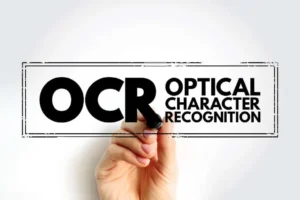7 Key Features of Pharmacy Inventory Management System

Effective management of pharmacy inventory is a vital component of daily operations, exerting a direct influence on patient care, financial stability, and overall operational efficiency. The importance of an automated system cannot be overstated, as it is one of the building blocks of a pharmacy’s success. In this post, we delve into the profound features of pharmacy inventory management systems, shedding light on basic options and opportunities they offer for businesses.
Why Are Pharmacy Inventory Management Systems Popular?
One of the foremost concerns in the pharma sector is ensuring the safety and well-being of patients. Accurate inventory management plays a pivotal role in this regard. It guarantees that the right medications are consistently available and ensures patients receive the correct prescriptions. Timely restocking of crucial medications and monitoring of expiry dates are vital to maintaining patient safety.
Smooth workflow is vital in a busy drugstore. An automated inventory system ensures pharmacists and staff can quickly locate medications, reducing patients’ wait times. It also minimizes the time spent on inventory-related tasks, allowing staff to focus more on patient care.

We are confident that we have what it takes to help you get your platform from the idea throughout design and development phases, all the way to successful deployment in a production environment!
Key Features of Pharmaceutical Inventory Management System
Pharmacy inventory management software is a specialized computer application designed to help pharmacies efficiently and accurately manage their inventory of medications, healthcare products, and supplies. This healthcare technology solution streamlines various aspects of inventory control, from ordering and receiving products to tracking stock levels and dispensing medications to patients. Here are 7 key features of software important for drugstores:
Live tracking
Pharmacies often stock a wide range of medications with varying shelf lives and patient-specific needs. Real-time medication tracking ensures the right medications are readily available, reducing the risk of medication errors and ensuring patients receive the correct prescriptions on time.
Thanks to using professional software, staff can react swiftly to fluctuating demand, ensuring essential medications are never out of stock. Many pharmacy inventory management systems with monitoring updates in real time can be integrated with other systems, such as point-of-sale (POS). This ensures sales data directly affect inventory levels, reducing the chance of mistakes or delays in updating stock.
Reading UPC codes
Barcode scanning allows staff to quickly and accurately identify products. Instead of manual data entry, a simple scan of the barcode on a product’s packaging provides instant access to product information, including name, quantity, and sell-by date.
When scanning barcodes on prescription labels, the system can ensure that the right medication is dispensed to the right patient. When placing orders with suppliers, barcode scanning tools can help ensure that the correct products are ordered, reducing the risk of receiving incorrect shipments.
Automated replenishment
Automated replenishment or reordering eliminates the need for manual monitoring and decision-making regarding when and how much to reorder. The pharmacy inventory management system, instead, automatically assesses stock levels and initiates reorders as needed.
By setting minimum stock level thresholds, businesses can ensure that they never run out of crucial products. Automated reordering ensures that replenishment orders are generated well before the stock reaches a critical low.
On the flip side, automated reordering can help businesses avoid overstocking. By setting maximum stock level thresholds, the system can halt reorders when inventory levels are comfortably high, preventing unnecessary capital from being tied up in excess stock.

Supplier management
Building a pharmaceutical supply chain is a critical step in supplier management. The system allows pharmacies to evaluate and select suppliers based on various criteria, including product quality, pricing, reliability, and adherence to regulatory standards. It streamlines the process of identifying trustworthy suppliers.
Pharmacy inventory management systems often include features for ongoing supplier performance monitoring. This involves tracking metrics like on-time deliveries, product quality, and response to issues or concerns.
These tools assist in managing supplier contracts, ensuring that negotiated terms and pricing are consistently adhered to. The system can also trigger alerts for contract renewals or revisions.
Expiry date tracking
Drug expiration tracking guarantees that patients receive safe and effective treatments, reducing the risk of administering compromised products. The system tracks expiration dates at a batch or lot level, ensuring that specific batches are used before others. This reduces the risk of having to discard entire batches of expired products.
The system generates automatic alerts and notifications as products approach their expiration dates. This allows pharmacy staff to take action well in advance of the expiry to prevent dispensing outdated items.
Expiry date tracking tools can be integrated with dispensing systems to prevent the dispensing of items past their expiry dates, cutting the probability of medication errors.
Inbuilt tools for reporting and analysis
Professional pharmacy inventory management software includes a report and analytics section that compiles and presents data from various aspects of inventory management, allowing pharmacy staff to make well-informed decisions. For example, pharmacies can analyze historical sales data to predict product demand and adjust stock levels accordingly.
Analyzing cost data and trends helps pharmacies identify opportunities to reduce expenses, streamline operations, and optimize profit margins. For example, the tools can highlight cost-effective alternatives for specific medications.
Multi-location reserve coordination
Multi-location pharmacy inventory management is a critical practice that enables pharmacy chains and healthcare networks to seamlessly manage a vast array of medications, healthcare products, and supplies across multiple locations, for example, hospitals.
Multi-location pharmacy inventory management often involves centralized control from a headquarters or main distribution center. This central hub monitors stock levels, coordinates orders, and maintains consistency across all locations.
The ability to transfer goods between locations is vital for network pharmacies. When one location experiences high demand for a specific medication, the system can facilitate the transfer of stock from another location to prevent stock outs.
Examples of Pharmacy Inventory Management Systems
There are many pharmacy inventory management software available in the market, each with its own set of features and capabilities. Here are some examples of popular software:
- RxSafe offers a suite of pharmacy automation and inventory management solutions. Their software includes features like real-time inventory tracking, automated reordering, and prescription filling automation.
- McKesson Connect provides pharmacy management software that includes inventory management features. It allows pharmacies to manage their inventory, place orders with suppliers, and track product availability.
- PioneerRx is a pharmacy management system that includes inventory management capabilities. It provides real-time inventory tracking, prescription synchronization, and reporting tools to help pharmacies optimize inventory and operations.
The choice of software depends on the scale of the pharmacy, as well as the features and capabilities required to streamline operations and enhance patient care. As a business owner, you have a choice to use ready-made pharmacy stock control solutions or to choose custom healthcare application development tailored to your specific needs.
Conclusion
Inventory optimization in pharmacies elevates the patient experience, nurtures customer loyalty, and streamlines business operations. Aligned with data-driven strategies, regulatory compliance, and environmental stewardship, it underscores the pharmacy’s commitment to excellence.
For pharmaceutical businesses seeking to streamline their operations and achieve excellence in inventory management, consider partnering with the Global Cloud Team. Our expertise in inventory and EHR software development solutions can empower your pharmacy with cutting-edge technology, ensuring seamless inventory management and enhanced patient care. Engage our services today and elevate your pharmacy’s operations to the next level.
Top Articles
Exploring Optical Character Recognition: Key Concepts and Uses
I am here to help you!
Explore the possibility to hire a dedicated R&D team that helps your company to scale product development.






